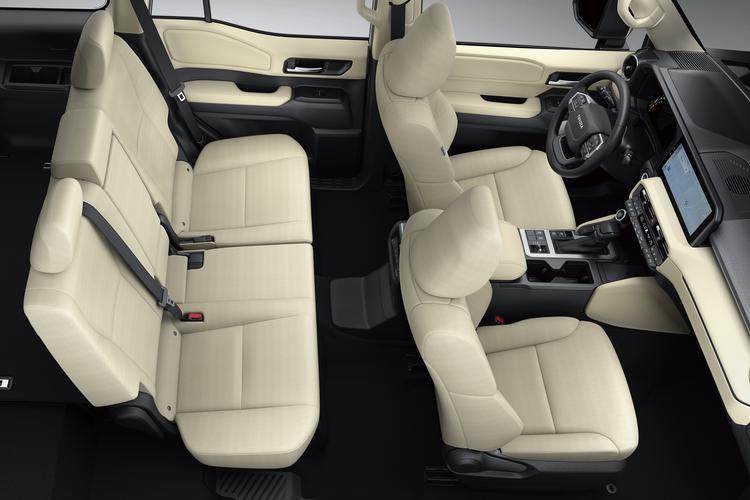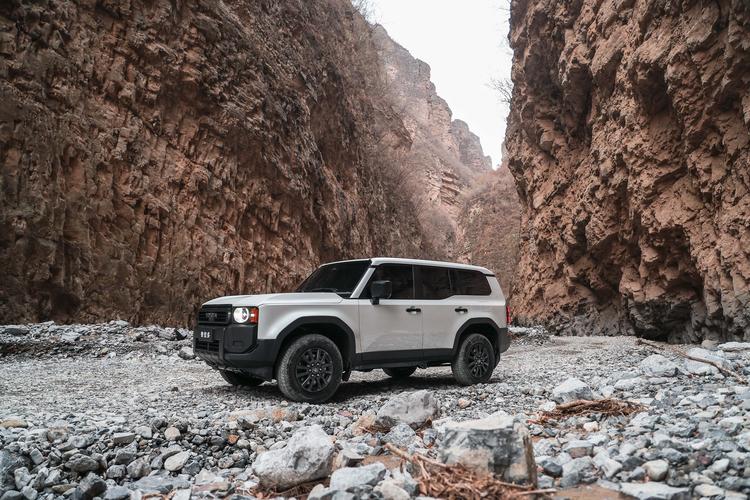Are you curious about the ideal prado tyre air pressure for your 2025 Toyota Prado? A correct PSI not only boosts your car’s performance but also ensures your safety under the scorching heat of the Gulf region. Dive in to learn practical tips and clear guidance tailored for your driving needs.

How to Adjust Your Prado's Tyre Pressure Correctly
Maintaining the correct tyre pressure is a simple yet vital process that can save you future headaches. Start by following these essential steps:
Quick Inflation Checklist
Locate your Prado’s recommended PSI, usually found on the door jamb sticker; this typically ranges from 32-35 PSI.
Always check the tyre pressure when the tyres are cold (having been stationary for at least 3 hours).
Increase the PSI by around 2-3 when carrying heavy loads, such as during family outings with extra luggage.
Lower the PSI by 1-2 if you plan to take the Prado off-road, particularly on loose sandy terrain.
These steps incorporate simple inflation tips that help you achieve the right balance between performance and fuel efficiency.
Recommended Tools for 2025 Models
To ensure accurate readings, equip yourself with the following:
A digital tyre pressure gauge with a precision of ±0.5 PSI.
An automatic air compressor that offers preset modes.
Valve stem caps featuring pressure indicators for quick visual checks.
Recommended Prado Tyre Pressure Values (2025 Models)
Maintaining correct tyre pressure is influenced by driving scenarios. Below is a guide to help you adjust your Prado’s tyre pressure according to different situations:
Driving Scenario | Front Tyres | Rear Tyres |
|---|---|---|
Urban Commuting | 33 PSI | 32 PSI |
Highway Cruising | 35 PSI | 34 PSI |
Full Load Capacity | 38 PSI | 40 PSI |
Desert Driving | 25-28 PSI | 23-26 PSI |
Remember to refer to your owner’s manual for any model-specific adjustments.
3 Key Factors Affecting Tyre Pressure
Several influences can affect your Prado’s tyre pressure. Consider the following factors before making adjustments:
Temperature Fluctuations
Think about the searing heat in places like the UAE, where the ambient temperature can sharply increase your PSI throughout the day:
In the early morning, you might find pressures around 32 PSI.
Mid-afternoon readings can jump to approximately 36 PSI, reflecting roughly a 12.5% rise.
As the day cools, the pressure stabilizes to about 34 PSI by nightfall.
It’s best to check the tyre pressure early in the morning to get a consistent reading.
Load Distribution
Your daily driving conditions and load variations significantly influence tyre performance:
Extra weight from roof racks may require an additional boost of about 5 PSI.
Carrying a full load of passengers, especially if it exceeds 400kg, typically necessitates an extra 3 PSI.
Towing a trailer calls for at least an extra 4 PSI to safeguard the vehicle’s load capacity.
Understanding how your vehicle is loaded will help you maintain optimal inflation throughout your journeys.
Tyre Age & Wear Patterns
Over time, tyres experience wear and tear, affecting their ability to hold air:
New tyres should adhere closely to the recommended PSI values.
For tyres that are 2 or more years old, consider adding an extra 1-2 PSI to account for sidewall fatigue and gradual pressure loss.
Consistent monitoring and routine maintenance are essential to address these changes effectively.

Maintenance Tips for Year-Round Safety
A proactive maintenance routine is vital for ensuring your safety on the road. Here’s how to keep your Prado’s tyres in top shape:
Monthly Pressure Check Routine
Always park your vehicle on a level surface before checking.
Use a calibrated gauge rather than relying on fuel station tools.
Check all four tyres to ensure uniformity.
It’s best to carry out these checks before sunrise, when the tyres are still cold.
Seasonal Adjustments
During the summer months in the Gulf, reducing the PSI by 2-3 from the maximum can help prevent over-inflation due to high temperatures.
In cooler seasons, revert to the standard PSI values outlined in your manual.
If you encounter rainy conditions, a slight increase of about 1 PSI can provide better traction and handling.
Smart Tyre Technology Updates (2025)
Emerging technologies are transforming the way we monitor and maintain tyre pressure. Consider these updates for your 2025 Prado:
Direct TPMS (Tyre Pressure Monitoring System) calibration methods are becoming more accessible and accurate.
Mobile pressure monitoring apps can now automatically factor in climate conditions, giving you tailored inflation tips.
Upcoming auto-adjusting valve systems promise even better safety, with features set to roll out in Q3 2025.
These innovations aim to simplify maintenance, ensuring that your Prado always hits the road in peak condition.
FAQ
Q:What is the ideal Prado tyre air pressure for daily urban commuting?
For typical urban driving, maintaining a pressure of around 33 PSI for the front tyres and 32 PSI for the rear tyres is generally recommended. These values are designed to provide a balanced ride while maximizing tyre life and fuel efficiency. It's important to check these values regularly, as even small deviations can affect handling and stability. A digital tyre pressure gauge helps in achieving precise readings. Always consult the owner’s manual for any adjustments specific to your model.
Q:How often should I check my Prado tyre pressure to ensure optimal performance?
It is advisable to inspect your tyre pressure at least once a month, especially given the extreme temperature fluctuations common in the Gulf regions. Regular checks help you spot any significant pressure changes early, preventing potential safety hazards. For busy drivers, integrating this routine into your monthly car maintenance schedule can be very beneficial. Using a reliable, calibrated gauge is key to ensuring accuracy. Keep a record of your readings to detect any patterns or sudden shifts in PSI.

Q:How does the ambient temperature specifically affect Prado tyre air pressure?
Ambient temperature plays a crucial role in how your tyre pressure behaves; high temperatures can increase the PSI significantly while cooler temperatures may cause it to drop. In the harsh summer climate of the UAE, for instance, you might see your tyres’ pressure rise by over 10% during the day. This variation requires you to adjust your inflation strategy to avoid over-inflation, which can negatively affect tyre wear and driving comfort. Monitoring pressure during cooler times of the day, like early mornings, gives you a more accurate baseline. Accurate temperature monitoring helps you adjust more effectively for optimal performance.
Q:What steps should I take if I notice frequent fluctuations in my Prado tyre air pressure?
If you observe that your tyre pressure is fluctuating regularly, it may indicate underlying issues such as leaks or even valve problems. Start by using a high-quality digital gauge to verify the consistency of your readings. Examine the tyre for any visible signs of wear or damage, and check the valve stems for proper sealing. Should the erratic behavior continue, it is wise to have your vehicle inspected by a professional. This proactive approach not only safeguards your safety but also helps maintain the overall performance of your Prado.
This article is for reference only. Please consult local current laws and regulations.
Read More:
How Long Does a Car Battery Last? 2025 Maintenance Guide
How Much Does It Cost to Charge an Electric Car in 2025?
How to Check Car Violation in Saudi Arabia:2025 Updated Guide
8 pics

Abdul Rahman is an avid car enthusiast with over a decade of self-driving travel experience. He loves hitting the road in various vehicles, exploring different landscapes. Besides, he enjoys sharing practical knowledge about car usage, helping fellow drivers solve problems and make the most of their rides.




















